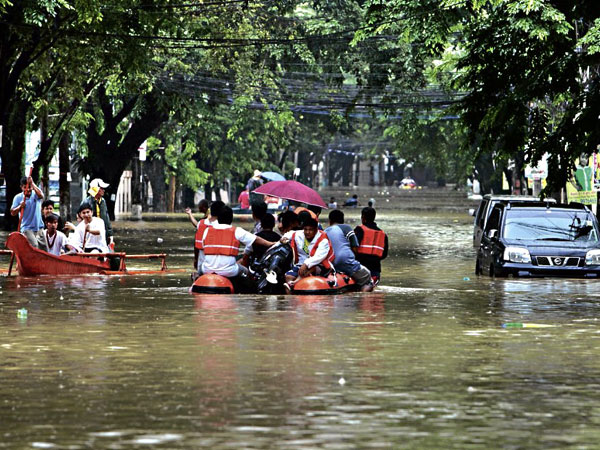The flooding of up to 80 percent of Metro Manila in the past few days has been seen as a repeat of the “Ondoy” disaster just three years ago. For the property experts, what has happened twice reinforces the trend: the spike in the demand for high-rise living immediately after traumatizing floods.
Enrique M. Soriano III, Ateneo program director for real estate and senior adviser for Wong+Bernstein Business Advisory, said “we will definitely see an increase in rental and secondary market activity in the next 12 months.”
Soriano added that the “demand for preselling projects with completion phase in the next 24 months will still follow a normal demand curve.”
National Real Estate Association chair Alejandro S. Mañalac said, “In general, I would say a spike in demand for properties in high elevations, whether for high-rise projects or even for house and lots, is in.”
Julius Guevara, Colliers International’s associate director for valuation and advisory services and head of consultancy and research, said: “There may be a spike in demand, but not significantly for preselling condos, since those affected by the floods would want to immediately move into housing that is already available. Those who decide to move may opt to rent first while shopping for a new home, especially if their old homes were damaged significantly.” Colliers International is a global real estate services.
Guevara said: “There may be a slight jump in demand because of the recent flooding. Once again, people are reminded that the climate is changing and that their current place of residence may be found in a hazard zone. So there may be an increase in demand for condos as people look for safer places to live. However, it should be pointed out that those who were most deeply affected by the inundation are those less fortunate and have no recourse but to live in hazardous areas. So they have no other option but to continue to live in those areas until the government delivers on their plans to increase housing for the marginalized.”
Claro dG Cordero Jr., Jones Lang LaSalle Leechiu’s head of research, consulting and valuation, assessed that there may be a visible spike in demand in the next few months due to the recent flooding, especially as this event “emphasizes the need for masterplanned and well-designed communities to help prevent the same disaster from happening.”
Soriano said that a sudden spike in rental demand and secondary markets for high-rise condos was felt immediately and within the 12 months after the Ondoy calamity.
“This happened in areas where Ondoy caused massive destruction. Residents had to abandon their homes and move to high-rise apartments,” said Soriano.
Cordero said that what happened after Ondoy somehow influenced the growth of demand for high-rise accommodation. However, the main determinant of growth has still been due to the high level of population in the metropolitan areas.
Mañalac also agreed that there was an increased demand for high-rise living after Ondoy.
However he explained: “It wasn’t only the flooding that served as a wake-up call to buyers to really take a closer look at condominium living. While they have realized the advantages of living in a properly conceptualized, responsibly developed and professionally maintained projects that still had electricity and water for at least a couple of days, or until the public utility lines were restored after being damaged by typhoons, they also discovered that they could actually enjoy ‘country club type’ amenities every day. So, yes, there was a spike, but it cannot be purely credited to the flooding.”
Guevara said that “there was a noticeable increase in demand not only for condos but for all types of housing as long as they were in safer areas without history of flooding.”
Guevara added that “the demand was more apparent for ready-for-occupancy housing since those that were displaced needed a place to move into right away. Demand also shifted somewhat from house and lot to condominiums, and from low-lying areas (i.e. Marikina) to higher ground (i.e. Cavite).”
“This demand was short-lived since it was believed that Ondoy was a once-in-a-lifetime event, but now that we have experienced a similar disaster in less than three years, we foresee that buyers would be more particular on the location of their purchases,” he said.
